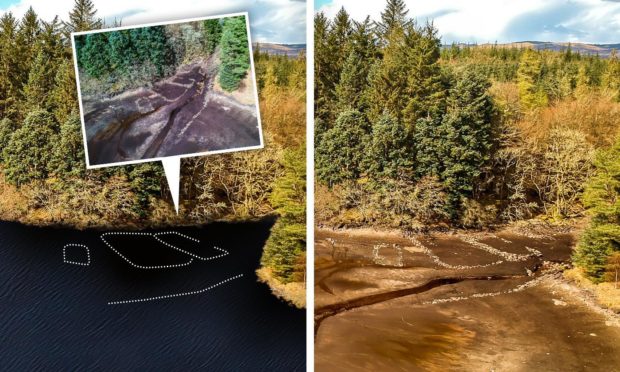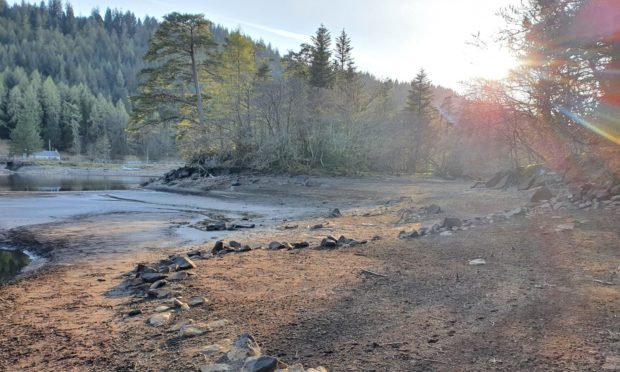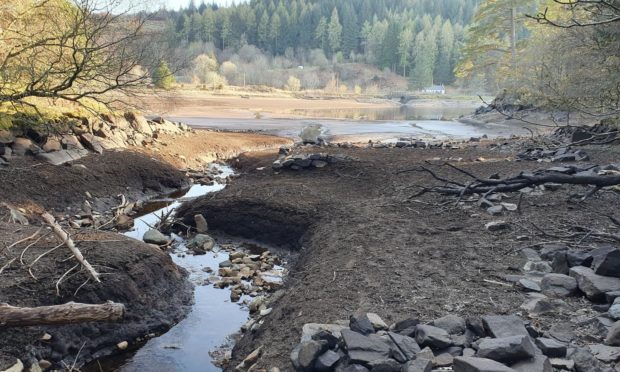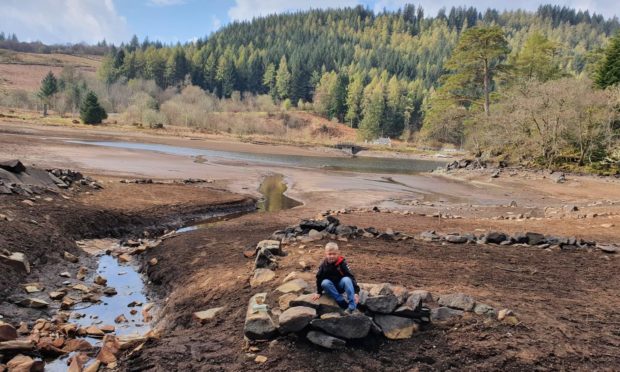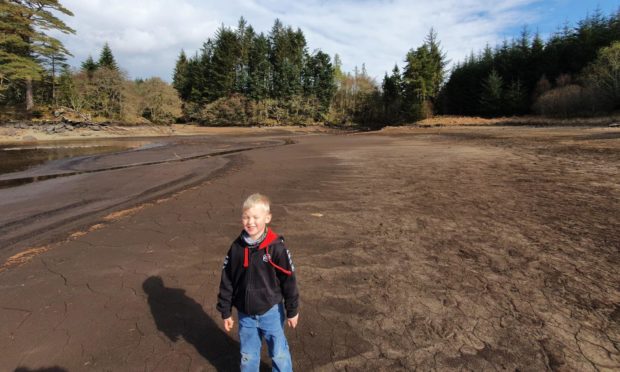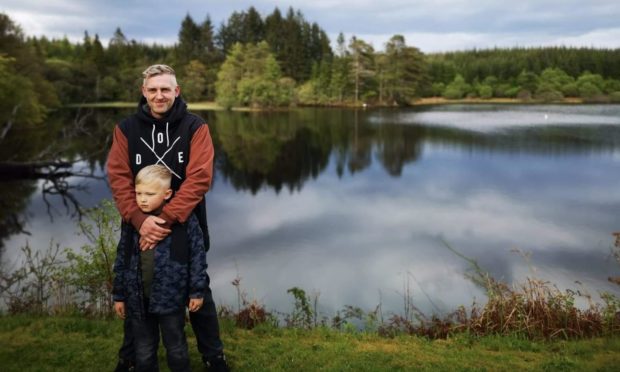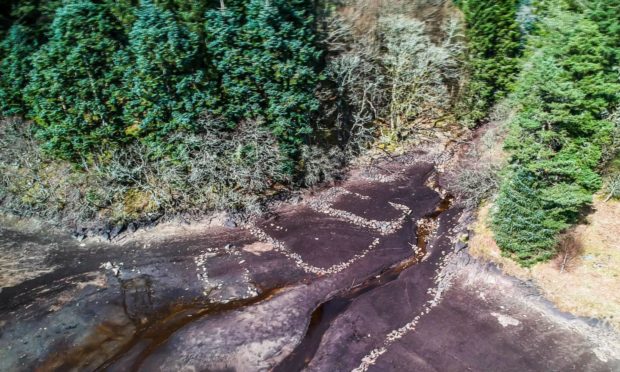Maintenance work on an Argyll canal has resulted in the ruins of an ancient castle becoming visible for the first time in centuries.
The Crinan Canal was drained over the winter months as part of a £4million facelift to improve safety at the scenic route.
That process exposed what it is believed to be the ancient seat of the Clan MacTavish.
And according to the clan historian, that is a sight no living person has ever laid their eyes on before.
When the work was completed earlier this month, the ruins disappeared under the murky waters of Loch A’bharain – a freshwater loch used to feed the canal – once more.
Now members of the clan are calling for a memorial marker at the spot.
Clan MacTavish
Dunardry, between Lochgilphead and Crinan, was the site of the MacTavish stronghold in Argyll for centuries.
For hundreds of years, the small castle or keep, sat proudly by the freshwater Loch A’bharain (Loch of the Baron).
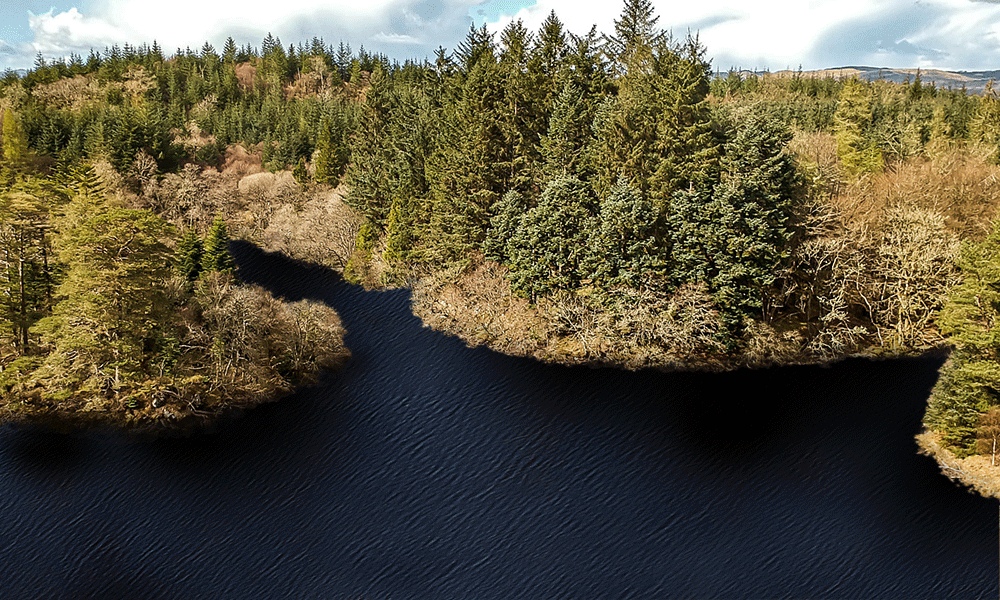
It was last inhabited by Lochlann MacTavish around 320 years ago, but was settled by MacTavishes as far back as around 893AD, more than 1,000 years ago.
Today Loch A’bharain is a reservoir for the Crinan Canal – which was built in 1809.
During the winter, Scottish Canals carried out an extended period of maintenance, when lock gates one to four were replaced in a £3.7million project.
The canal, which has been dubbed Britain’s most beautiful shortcut, was drained of all its water from November until May.
It meant that the loch adjacent to the canal was emptied for the first time in a long time, displaying the footprint of the ruins of the former castle.
How have members of Clan MacTavish responded to the find?
Patrick Thompson is Seannachie (historian) to the chief of Clan MacTavish.
From his home in Texas he told the P&J that he believes that the last time these ruins were visible was before the loch was developed and flooded to build the canal more than 200 years ago.
Mr Thompson and other members of Clan MacTavish have called for the spot to be marked and details of its history displayed.
An earlier survey of the site by West of Scotland Archaeological Services was carried out from a boat.
Not all of the footprint could be seen at that time, as much of it was under water.
Drone images taken while the loch was empty by local man William Holmes reveal a larger footprint than what was previously known to be there.
Mr Thompson said: “It is indeed pleasant to know the old keep was not as tiny as originally thought by a couple of generations.
“It is a bit of a shame that the historical remnants of the keep of one of the oldest clans in Scotland is submerged under water.
“However, since is has been there for so long, it would be a difficult task to permanently resurrect it for permanent viewing. That would cost a fortune.
“The least to be done with this spot would be to place a historical marker on the shore near the mostly submerged ruins, stating the date of settlement and its significance to Clan MacTavish.”
‘Growing up I had always been told there was a castle in that loch somewhere’
Robbie MacTavish, 37, lives in Lochgilphead, the largest town the canal runs through.
He said: “Out of all the times the canal has been emptied, the loch has never been low enough to see these ruins before.
“Growing up I had always been told there was a castle in that loch somewhere.
“No one in my family has ever pinpointed the exact spot of the castle before.
“I took a drive down the next day to see it with my son, Cairn.
“It was unreal. It was like coming home.
“That’s my family’s roots. Where it all started. It was a great feeling.
“I am in contact with members of Clan MacTavish in America all the time. They want to come over as soon as they are able.
“It would be great if there was some sort of permanent marker there.”
‘This was like finding treasure’
Joy Anderson, who lives in Oklahoma, is the international commissioner for Clan MacTavish.
She said: “No one alive had actually seen the castle ruins. It was a little emotional seeing them (in the photographs).
“Having read about them and heard the history – and none of us had known exactly where they were – I think seeing them exposed was like finding treasure for most of us.
“Ideally, what I would love to see is the canal built around the ruins. It’s not a huge area, and so close to shore.
“Our clan has come to Scotland together before. If a historical marker or dam was built there, I am sure that many of us would make the trip to put our feet there.”
A spokesman for Historic Environment Scotland said the ruins were of “historic importance”.
He added: “We would welcome and support any efforts to provide further information about these fascinating remains.
“We work closely with Scottish Canals and would be delighted to offer any help we can to them, the local community or Clan MacTavish if they decide to provide further information and a marker at Loch A’bharain.”
